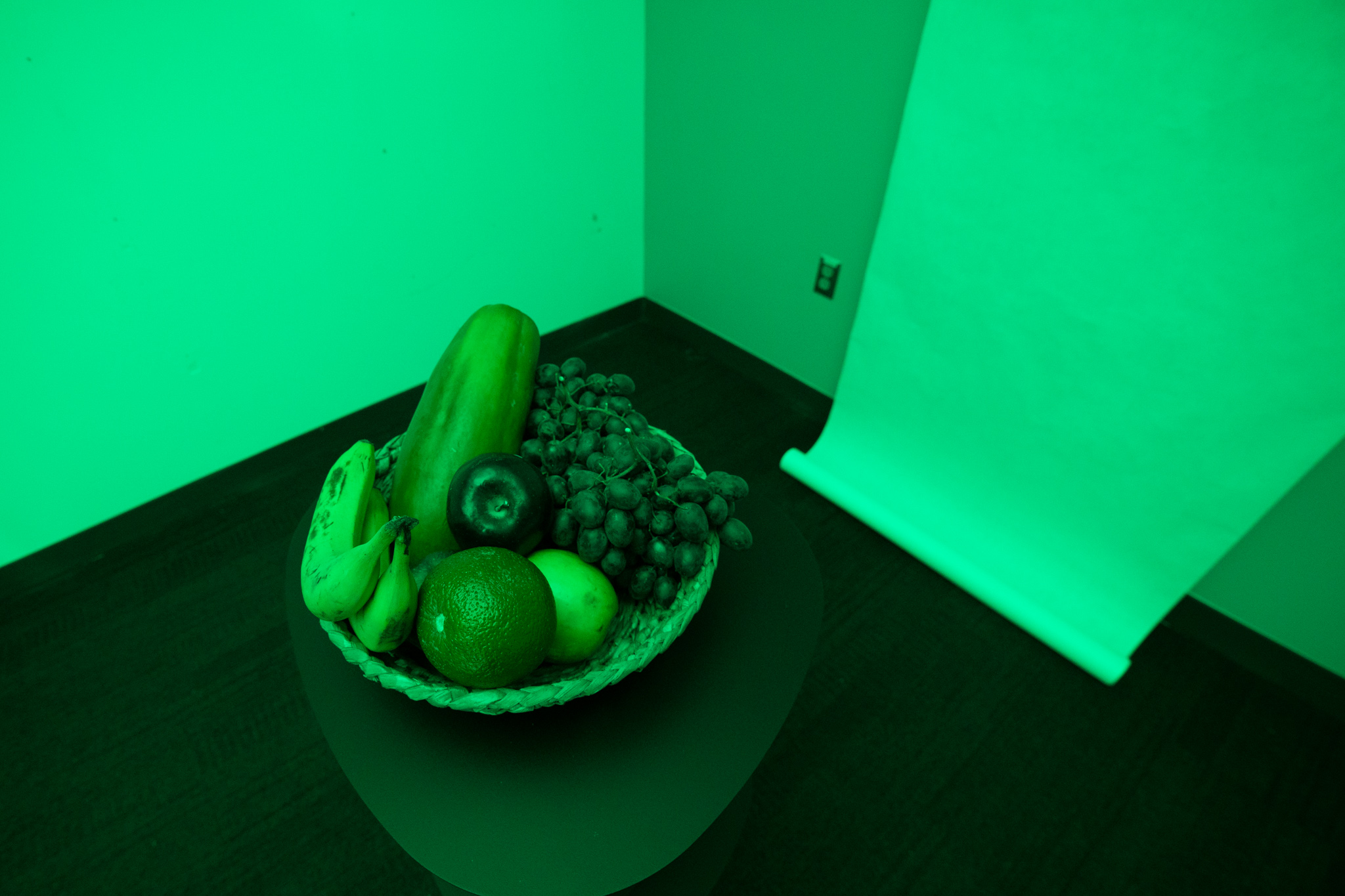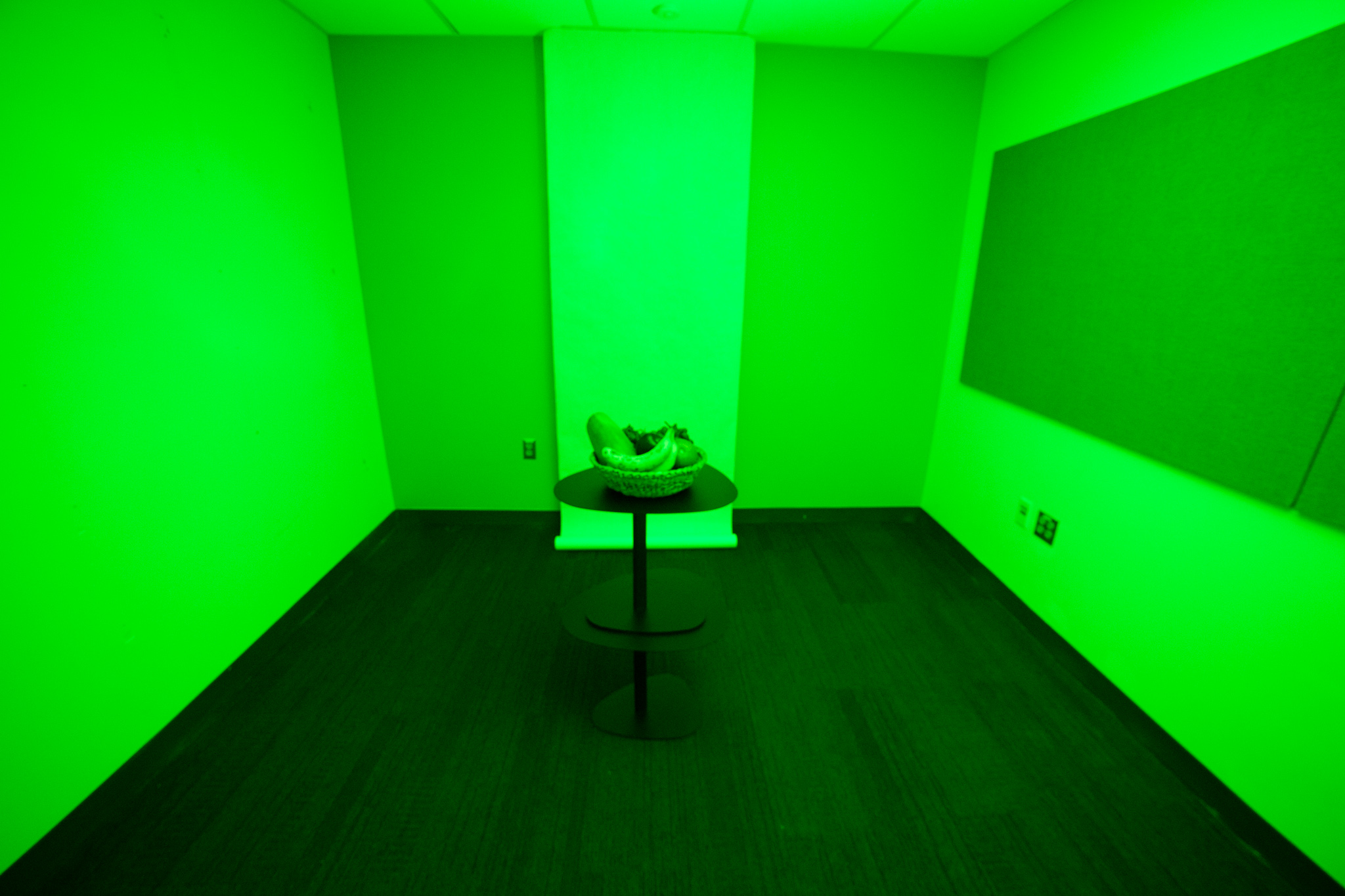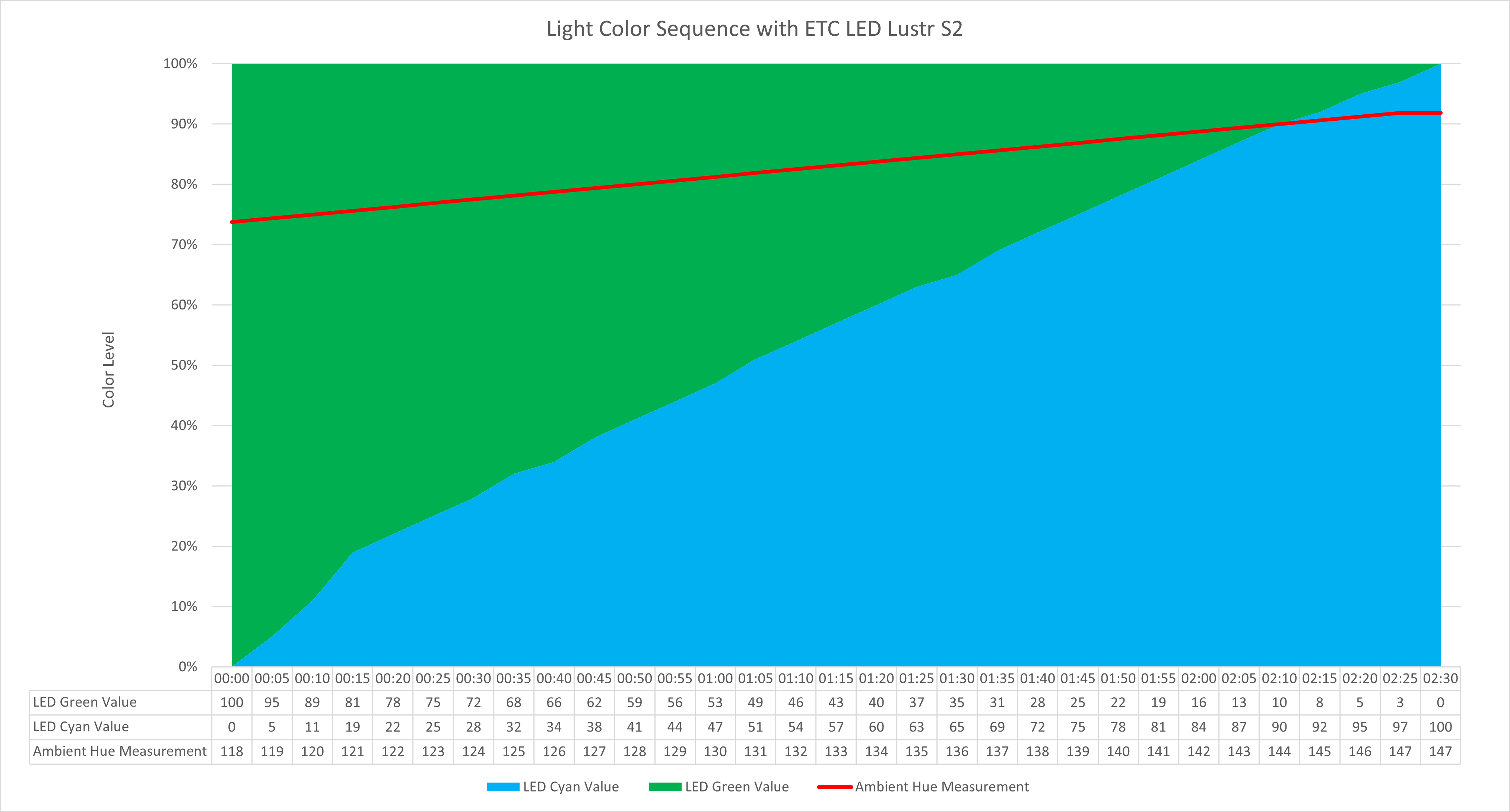Green Room
2022
color-changing LED light, white walls, fruits
Installation
Light Study
2022
color-changing LED light, white walls, fruits
Installation
Light Study
Green Room immersed visitors in an enclosed room illuminated by green light. The light faded from 530 nm to 500 nm in 2 mins and 30 sec, slow enough that the color transition was perceptually untraceable. The fruit bowl served as an objective reference for the visitors to investigate the subtle transformation of sight.




Inspiration and Process
The CIE 1931 color spaces define quantitative links between distributions of wavelengths in the electromagnetic visible spectrum, and physiologically perceived colors in human color vision. Its xy chromaticity space shows a much bigger area of green, which inspired me to experiment with human visual perception via different wavelengths of green light.
Knowing that RGB LEDs can not produce enough green area on the xy chromaticity space. I did a spectrum comparison between 5 different LED fixtures with a spectrometer, and ended up going with ETC LED Lustr S2, which has red, amber, lime, green, blue, cyan, and indigo.
I had only one Lustr. It is an ellipsoidal light and the only 50 degree lens I had was not enough to flood the entire ceiling to create enough bounced light in the room. I eventually took out its lens to maximize the ambient brightness, and added a diffusion (a piece of translucent vinyl) to get rid of distracting light dots on the ceiling.
To make sure the fade from 530 nm to 500 nm was perceptually smooth, I measured the spectral distribution of the ambient lighting, and discovered all I needed were green and cyan. Mixing these two colors could achieve the range approximately from 530 to 500 nm while keeping the “hump” on the spectral distribution as narrow as possible. I thought the lime color was going to help but it just added too much white.
Spectral distribution wouldn’t read a wavelength number at the peak of the hump, like I had imagined, so I couldn’t rely on it to create a step by step lighting sequence. Thankfully I could measure its Hue, so the lighting sequence was actually based on the range from 118 degrees to 147 degrees in Hue, while adding/subtracting green/cyan levels incrementally to find the evenly distributed Hue values in 31 steps. See the chart below.


Some improvements I could make:
- Fixture placement: Light sources could be more hidden. Light should be more evenly distributed. No direction and hot spot. Fixture placed on the floor was distracting. Someone mentioned trying to avoid casting shadows when there were 5+ people in the room. Someone asked about lighting direction which was not part of my design intent.
- The balance between giving enough context and too much explanation: I could have the color sequence bounce, not loop, so it was actually untraceable. I also didn’t need to show spectral reading charts printed on paper. People didn’t get it from those charts anyway. There may be a more refined way to do it. I probably didn’t even need paper or fruits? Not sure if they were helping or distracting.
- The fade could be even longer. I went with 5-seconds fade between steps because it was the default and it worked for my eyes. I was also afraid of not being able to keep people in for more than 3 mins. If this were a gallery installation, not a class final presentation, what would I have done? After spending so much effort on the scientific process, should I also make enough effort on artistic choice?